Imagine a day when we don’t consume oil, a day when renewable resources rule our every day. More and more I strive for my practice to communicate sustainability messages while still treading lightly. So the materials I use are crucial to how I create work.
Recent updates and blogs might give you the impression that I’m on a tangent. But the skills development I’m committed too is not a diversion. In alot of ways I’m becoming quite obsessed with finding renewable, regenerative and botanic materials that I can use in my sculpture practice.
Regenerative mycelium from fungi fits that aim, (see previous updates and posts) as does the exploration in paper. Up until now I’ve been focused on using post-consumer paper that was destined for the recycling bin.
A recent workshop I attended was not using post-consumer materials, as its focus was on Japanese handmade paper. So this exploration is about using materials made from renewable, sustainable and botanical sources.
The Japanese Washi and Textile Techniques workshop was a hands-on practical session delivered by the exceptional team at DNJ paper.
The founders Daphne Mohajer va Psaran and Jake Nakashima Edwards use a diverse range of traditional and contemporary techniques in their practice which is focused on creating paper based clothing, accessories and objects. Both have a deep knowledge of their craft and links back to specialised Japanese practices.
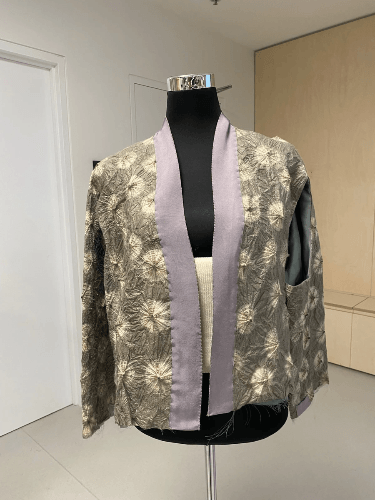
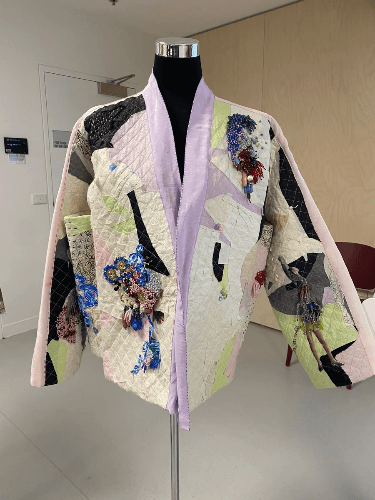
DNJ Creations
They introduced the workshop participants to two techniques: Momigami and Boro.
Momigami is a type of paper known for its strength and durability. Sheets of washi (Japanese handmade paper) are crumbled, softened and coated with a starch- based paste that transforms the paper’s texture. The result is a flexible, durable and cloth like material.
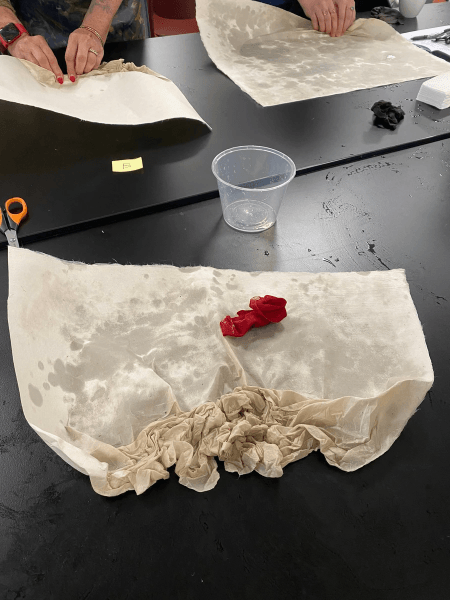
Scrunching the washi paper to absorb the konjac, starch based liquid
Don’t be surprised if you have already made the link to using these renewable plant based materials as a replacement to oil based fabrics that dominate fast fashion.
Historically Momigami was used in paper garments called Kamiko because the treatment made the paper resistant to tearing and water. The material is stitched, folded and worn just like fabric. In more contemporary uses, it's found in book binding, wallets, purses and even umbrellas.
Our goal for the workshop was to use the process to create a pillow (or cushion), using washi paper we put through the Momigami process, then using scamps of Momigami to create our unique pieces.
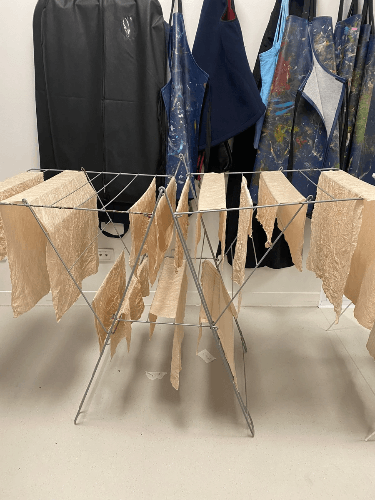
Drying the washi sheets
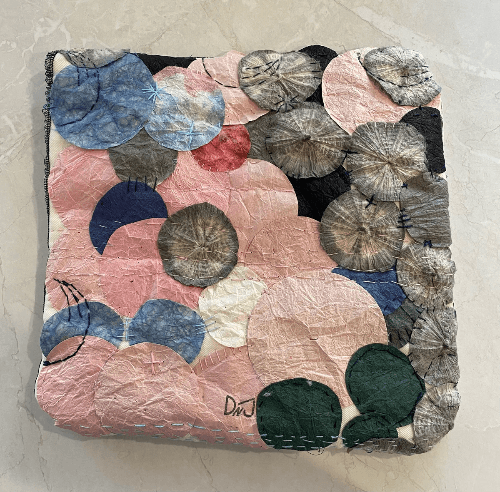
The finished pillow, using scraps that have all been through the momigami process.
We were also introduced to Boro, a technique created by resourceful Japanese workers, who would use their clothing scraps to create garments. The scraps were usually indigo dyed and then stitched together for reinforcement. These rags (Boro means rags) become garments for workers too poor to replace their clothing. They saw the beauty in the imperfection of these tatted materials.
Both the Momigami and Boro garments are on display at the NGV Melbourne in the Kimono exhibition, alongside traditional Noh and Kyogen kimonos worn by samurai, as well as more modernist fashion.
It’s with a beginner’s mind that I take on this exploration that will continue to be integrated into my sculptural practice over time.
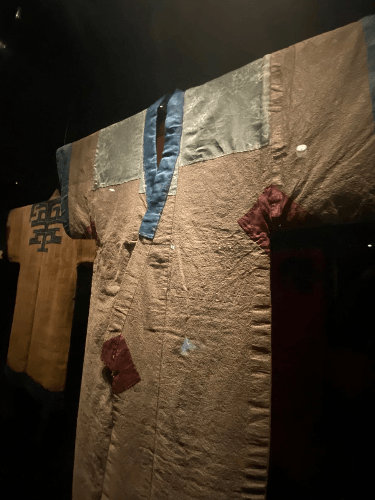
Kimono made from paper and fabric
Check out the Kimono Exhibition https://www.ngv.vic.gov.au/exhibition/kimono/
And DNJ https://dnj-paper.com/ - I highly recommend their workshops.
